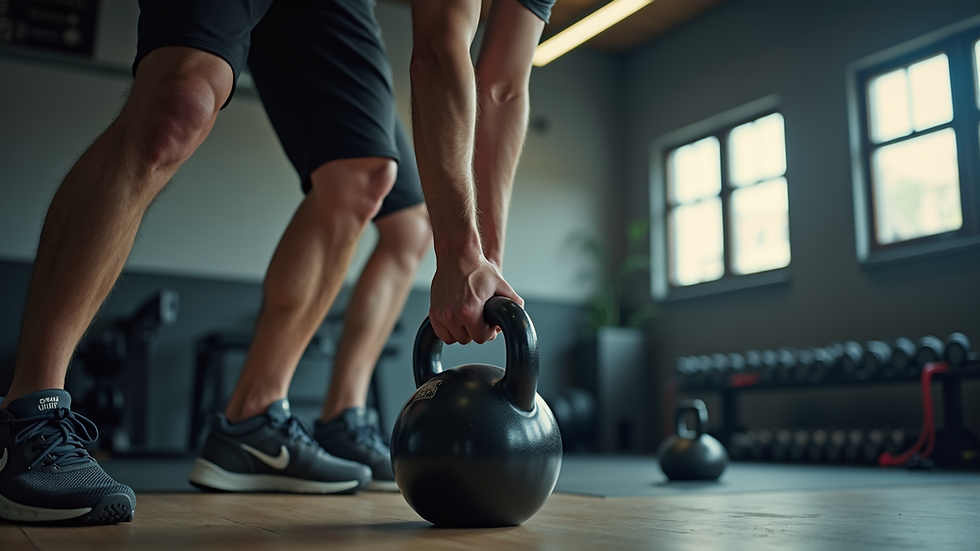Optimize Your Workouts: Best Training Methods to Lower Resting Heart Rate and Build Muscle in 2025
- Rick Delarosa

- 12 minutes ago
- 4 min read
In the fast-paced world of fitness, maximizing your workouts to lower your resting heart rate (RHR) and build muscle is both a challenge and an opportunity. As we approach 2025, staying updated with effective training methods is vital for achieving these health goals. This post will guide you through practical strategies that enhance your cardiovascular health while promoting muscle growth, helping you get the best results from your efforts.
Understanding Resting Heart Rate
To make the most of your fitness plan, consider what resting heart rate (RHR) means and its significance. RHR is the number of heartbeats per minute when you're at rest. A lower RHR reflects better cardiovascular health.
Most adults have an RHR ranging from 60 to 100 beats per minute, with top athletes sometimes experiencing rates below 60. Lowering your RHR can lead to several health advantages, including a 30% decrease in the likelihood of heart disease and improved recovery times after workouts.
The Importance of Muscle Building
Building muscle extends beyond looking fit; it significantly boosts your overall health. More muscle mass equals a higher resting metabolic rate, enabling you to burn more calories even when not exercising. For instance, every pound of muscle burns about 6-10 calories per day at rest, whereas fat burns only about 2-3 calories.
Strengthening your muscles improves daily performance and increases joint stability, which can reduce your risk of injuries. Combining muscle-building routines with cardiovascular activities creates a balanced fitness regime that effectively supports heart health and muscle development.
Best Training Methods to Lower Resting Heart Rate
1. High-Intensity Interval Training (HIIT)
HIIT is renowned for its quick, effective workouts that maximize cardiovascular and muscle gains. By alternating short bursts of intense activity with rest, HIIT pushes your heart to adapt and become more efficient.
Studies indicate that individuals practicing HIIT can see a reduction in their RHR by approximately 10-15% over a span of just a few weeks. You could try sprints interspersed with walking or dynamic movements like burpees and jump squats. Aim for 20-30 minutes of HIIT three times per week for the best results.
2. Steady-State Cardio
While HIIT is a popular option, steady-state cardio shouldn't be overlooked. This form of training means maintaining a consistent, moderate intensity over longer periods—think jogging, cycling, or swimming.
Research suggests that engaging in at least 150 minutes of steady-state cardio weekly can help lower your RHR by improving heart efficiency. Consider breaking it down into several sessions, making it manageable.
3. Resistance Training
Resistance training is key for muscle growth. Using free weights, machines, or resistance bands not only strengthens your muscles but also enhances heart health.
Studies show that regular resistance training can lead to RHR reductions of around 5-10 bpm. Focus on compound exercises such as squats, deadlifts, and bench presses. Aim for 2-3 sessions each week, ensuring you allow your muscles time to rest and recover.
4. Circuit Training
Circuit training melds resistance and cardiovascular workouts. In this approach, you perform several exercises in succession with minimal rest.
Circuit training can boost your heart rate and stimulate muscle growth simultaneously. An effective example could involve push-ups, lunges, and kettlebell swings. Look to spend about 30-45 minutes per session for optimal impact.
5. Active Recovery
Active recovery is essential in your weekly routine to balance intense training. Activities like yoga, walking, or mild cycling help lower your RHR while keeping you engaged.
By incorporating at least one active recovery day each week, you can promote heart health and support muscle recovery without added strain.

Nutrition and Hydration
Nutrition is as crucial as your workout methods. Eating a balanced diet of whole foods, lean proteins, healthy fats, and complex carbohydrates provides the nutrients needed for muscle growth and recovery.
Staying hydrated also plays a significant role in your performance. Strive for about 8-10 cups of water daily, adjusting according to activity levels and climate conditions.
Monitoring Progress
Tracking your progress ensures that you stay on course for lowering your RHR and building muscle. Utilize fitness trackers or smartwatches to keep a real-time pulse on your heart rate during exercise and at rest.
Regularly record improvements in the weights you lift, the number of reps, or your workout duration. This data will provide motivation and help you adjust your strategies when needed.
Incorporating Flexibility and Mobility Work
Flexibility and mobility are vital for performance and injury prevention. Implementing stretching or mobility workouts can enhance your range of motion and improve efficiency.
Make dynamic stretching a pre-workout ritual and static stretching a post-workout routine. Also, consider practices like yoga or Pilates to boost your overall flexibility.
The Role of Sleep and Recovery
Never underestimate the importance of rest. Good sleep is critical for muscle recovery, healthy hormone levels, and overall wellness. Aim for 7-9 hours of quality sleep nightly.
In addition to sleep, prioritize recovery activities such as foam rolling, massage, and proper nutrition to expedite muscle repair and minimize soreness.
Final Thoughts
As we approach 2025, refining your workouts to efficiently lower your resting heart rate and build muscle has never been easier. By blending HIIT, steady-state cardio, resistance training, and active recovery, you can craft a comprehensive fitness routine that meets your health objectives.
Don’t forget to pay close attention to your nutrition, hydration, flexibility, and recovery practices. With dedication and consistency, you will cultivate a healthier heart and a stronger, well-defined physique.
Explore these training methods, track your growth, and enjoy the transformation in your fitness journey this upcoming year!



Comments